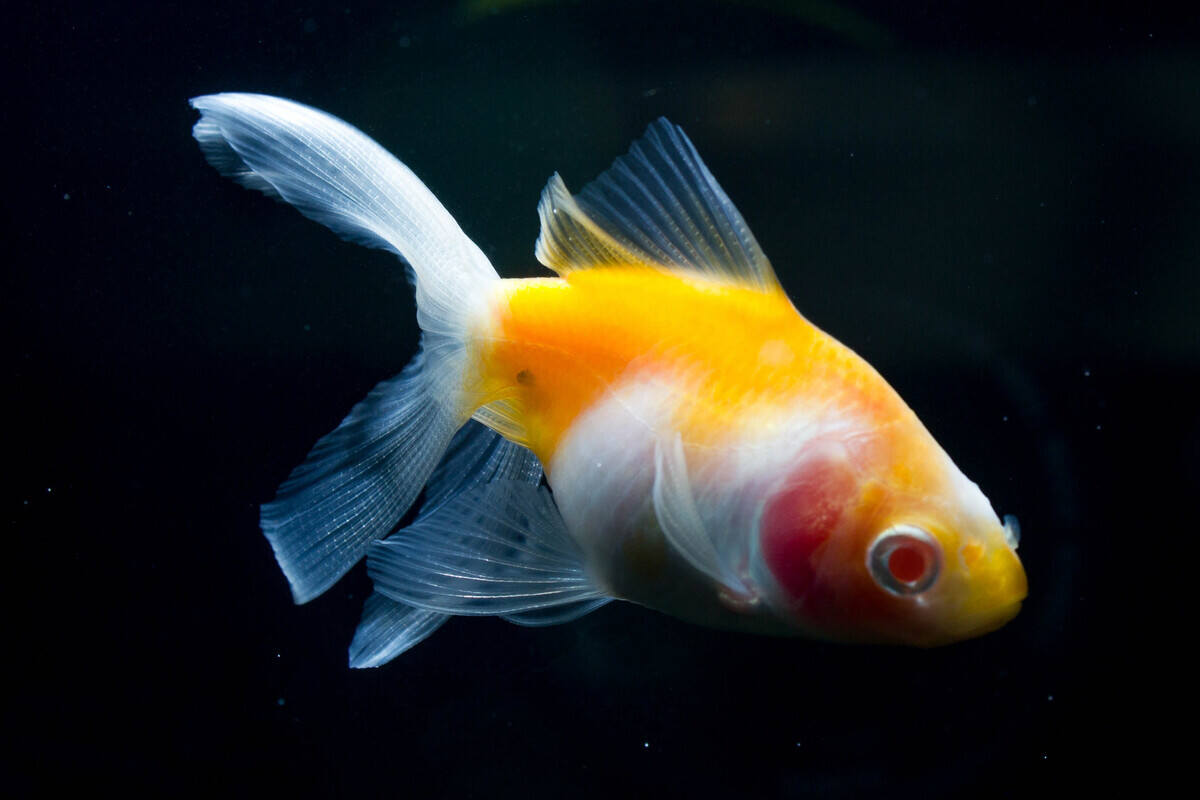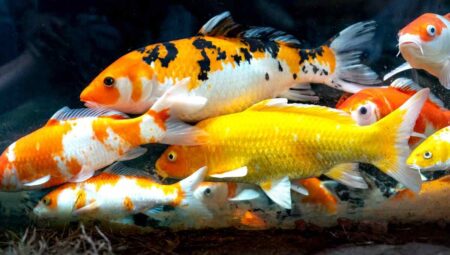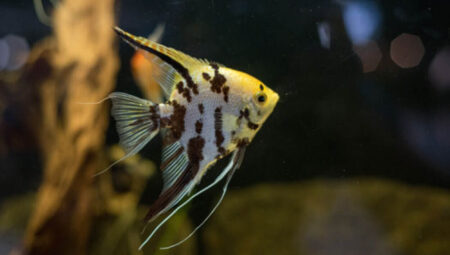Goldfish are cherished members of many households, captivating with their vibrant colors and graceful movements. To ensure the well-being of these aquatic companions, it’s crucial for every goldfish owner to be aware of common diseases that can affect them and the appropriate treatments.
Common Goldfish Diseases and Treatments: A Comprehensive Guide
In this comprehensive guide, we’ll delve into various goldfish ailments and provide insights into effective treatments.
1. Ich (White Spot Disease):
One of the most prevalent goldfish diseases is Ich, easily identifiable by small white spots resembling grains of salt on the fish’s skin. This parasitic infection is often triggered by stress or poor water conditions. To combat Ich, raise the tank temperature gradually, and administer a suitable anti-parasitic treatment following the product instructions.
2. Swim Bladder Disorder:
Symptoms of Swim Bladder Disorder include buoyancy issues, such as floating at the water’s surface or sinking to the bottom. Overfeeding, constipation, or poor water quality can contribute to this ailment. Adjusting the diet, fasting the fish for a day or two, and maintaining proper water conditions can aid in alleviating swim bladder issues.
3. Fin Rot:
Caused by bacterial infections, fin rot manifests as the deterioration of the fish’s fins, which may appear frayed or discolored. Improve water quality by regular cleaning and use a broad-spectrum antibiotic to treat bacterial infections. Isolate affected fish to prevent the spread of the disease.
4. Dropsy:
Dropsy is a severe condition characterized by the swelling of the fish’s abdomen, scales protruding like a pinecone, and lethargy. It’s often linked to internal bacterial infections. Quarantine the affected fish, provide supportive care, and consider using antibiotics under the guidance of a veterinarian.
5. Fungus Infections:
Fungal infections can occur externally or internally, presenting as cotton-like growths on the skin, fins, or gills. Maintain optimal water conditions, quarantine affected fish, and treat with antifungal medications to combat these infections effectively.
6. Anchor Worms:
External parasites like anchor worms can latch onto goldfish, causing irritation, inflammation, and potential infection. Remove visible worms manually using tweezers, and treat the entire tank with an anti-parasitic solution.
7. Cloudy Eye:
Cloudy eye, often a sign of bacterial infection or poor water quality, manifests as a white haze over the fish’s eyes. Improve water conditions, consider adding aquarium salt, and administer antibiotics as recommended to clear the infection.
Conclusion: Promoting Goldfish Health and Well-Being
Regular observation, proper nutrition, and maintaining a clean aquatic environment are essential components of preventing and addressing goldfish diseases. Understanding the symptoms and suitable treatments for common ailments empowers fish owners to provide the best care for their aquatic companions. Remember, consulting with a veterinarian specializing in fish health is always a prudent step for more serious or persistent issues. By adopting proactive measures, you can ensure a vibrant and thriving life for your beloved goldfish.

Is it easy to care for goldfish?
Caring for goldfish can be relatively straightforward, but it requires commitment and attention to their specific needs. Here’s a breakdown of key factors to consider when caring for goldfish:
1. Tank Size: Goldfish need ample space to thrive. Contrary to common misconceptions, they can quickly outgrow small bowls. A larger tank with proper filtration is essential. Aim for a minimum of 20 gallons for a single goldfish and additional space for each additional fish.
2. Filtration and Aeration: Efficient filtration is crucial to maintain water quality. Goldfish produce more waste than many other aquarium fish, so a powerful filter is necessary. Adequate aeration, provided by air stones or a bubbler, helps oxygenate the water.
3. Water Quality: Regular water changes are essential to keep ammonia and nitrite levels low. Goldfish are sensitive to poor water conditions, which can lead to various health issues. Test the water regularly and address any imbalances promptly.
4. Temperature and Environment: Goldfish are coldwater fish, thriving at temperatures between 65-75°F (18-24°C). Ensure a stable environment, avoiding drastic temperature fluctuations. Decorate the tank with non-toxic items, providing hiding spots and stimulation for the fish.
5. Feeding: Goldfish have specific dietary requirements. A high-quality goldfish pellet or flake food should be the primary staple. Supplement with occasional treats like live or frozen foods, but be cautious not to overfeed, as excess food can lead to health problems.
6. Tank Mates: Goldfish are social and can be kept with other goldfish, but compatibility is crucial. Avoid combining them with fish that may nibble on their fins. Ensure that tank mates share similar water temperature and quality requirements.
7. Health Monitoring: Regularly observe your goldfish for signs of illness or distress. Common issues include changes in behavior, lethargy, abnormal swimming patterns, or visible physical abnormalities. Early detection can aid in prompt treatment.
8. Veterinary Care: Establish a relationship with a vet experienced in treating fish. If you notice persistent health concerns or unusual behavior, seek professional advice. Preventive veterinary care can contribute to the long-term well-being of your goldfish.
Is it costly to maintain goldfish?
The cost of maintaining goldfish can vary depending on several factors, including the size of the tank, the number of goldfish, and the quality of equipment and supplies. Here’s a breakdown of potential expenses associated with keeping goldfish:
- Tank and Equipment:
- The initial investment in a suitable tank and equipment can be a significant cost. Larger tanks with proper filtration systems, heaters (if necessary), and aeration devices contribute to a healthier environment but may incur higher expenses.
- Water Conditioners and Testing Kits:
- Regular water testing is crucial for monitoring water quality. Water conditioners, dechlorinators, and testing kits are recurring expenses to maintain optimal conditions for goldfish.
- Quality Fish Food:
- High-quality goldfish pellets or flakes tailored to their nutritional needs are essential. While a staple, premium fish food may come at a slightly higher cost, ensuring a balanced diet contributes to the overall health of your goldfish.
- Decor and Substrate:
- Decorative items, substrates, and aquarium ornaments can enhance the aesthetic appeal of the tank. While not strictly necessary, these items may incur additional costs depending on your preferences.
- Veterinary Care:
- Veterinary care, if needed, can be an occasional but potentially significant expense. Regular check-ups and prompt treatment for any health issues are essential for the well-being of your goldfish.
- Electricity Costs:
- Running aquarium equipment, such as filters and heaters, contributes to electricity costs. While not exorbitant, it’s a recurring expense to consider.
- Replacement Parts:
- Filters, air pumps, and other equipment may require occasional replacement or maintenance. Factoring in the cost of replacement parts is prudent for long-term ownership.
While goldfish maintenance does entail some costs, it’s important to note that with proper care and attention, these costs can be reasonable and predictable.




